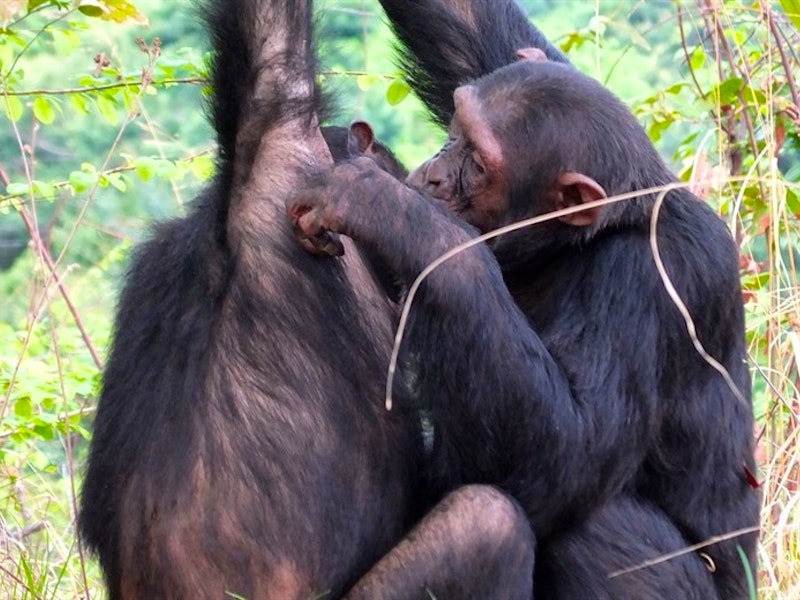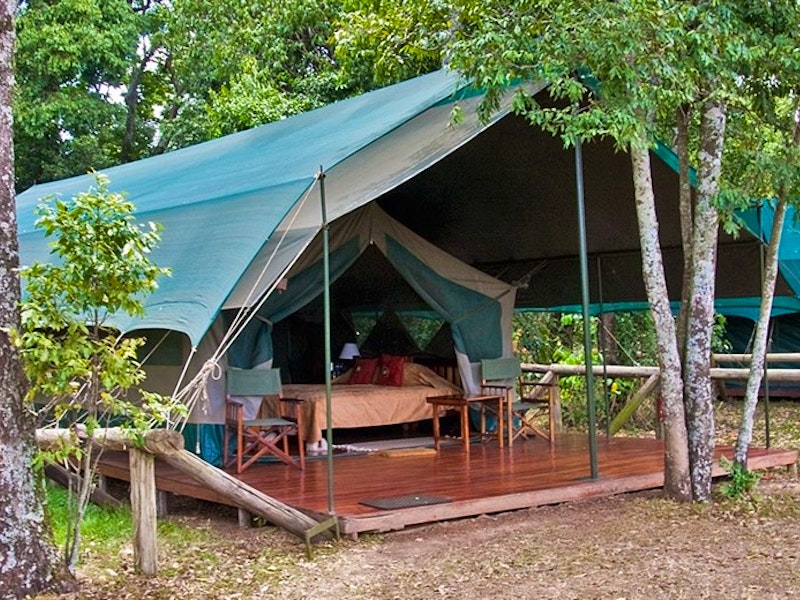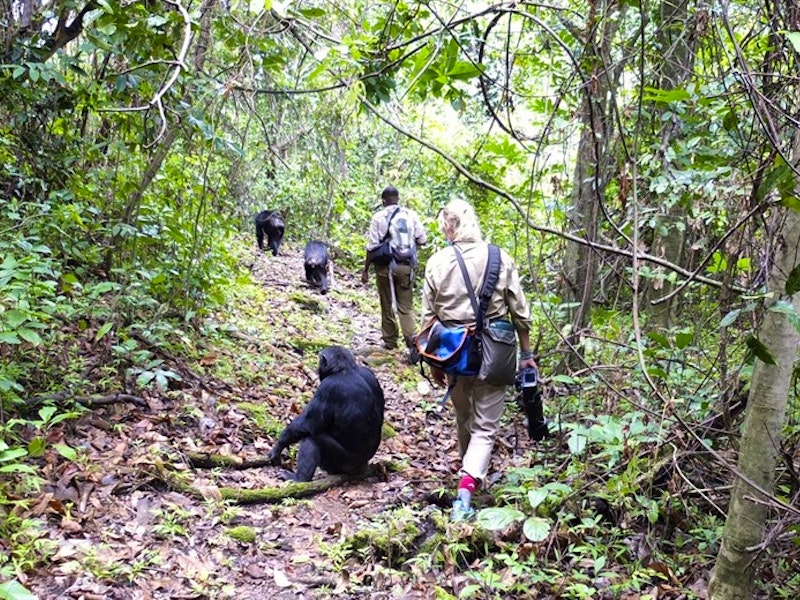
The remote Mahale Mountains in western Tanzania are home to one of the last remaining chimp populations in Africa. Sarah Gilbert heads into the montane rainforest to get up-close and personal with mankind’s closest relatives.

As Primus happily posed for the cameras, giving us first his left profile, then his right, I was spellbound by his strikingly familiar expressions, almost human brown eyes, and his hands – a more leathery, hairier version of my own. But this charismatic chimpanzee, the undisputed alpha male of M Group, was completely unfazed by the arrival of our small posse of Homo sapiens.
After a relaxed grooming session, the chimps were off foraging for fruit. And so we moved with them, following our machete-wielding tracker through tangles of branches and over snarling roots in hot pursuit. And it was hot, like a workout in a sauna, as I scrambled up muddy slopes, grabbing on to any available branch to haul myself up.


But it was all worth it. When we finally caught up with three of the chimps they filed past us one by one, so close I had to stop myself reaching down to touch their hirsute backs. We followed them until our hour was almost up, when suddenly Christmas – named after his birthday – stopped, turned and sat down in front of us like a celebrity facing the paparazzi.
The base for my four-night chimp-tracking safari was Nomad’s Greystoke Mahale camp – Mahale from the mountains and Greystoke after Edgar Rice Burroughs’ fictional character, better known as Tarzan. The beautifully isolated camp is reached by boarding a traditional wooden boat for a leisurely journey past glorious green mountains reflected in the sapphire-blue Lake Tanganyika.

Chimps are nomadic, building new nests every night, and at first light trackers head into the forest to locate members of M Group, who could be congregating a short boat ride and an easy 30-minute walk away, or high in the mountains; a strenuous three- or four-hour hike.
There are around 700 chimps in the forest but this 60-strong troop has been habituated to short spells of human contact by more than 50 years of study by Japanese researchers and, like characters in a long-running soap opera, their lives are well documented and equally engrossing.


My final encounter with M Group found them in a very different mood. They’d been out hunting and Primus was holding court at the top of a tree, dispensing red colobus monkey morsels to his favourite females. Suddenly a high-pitched hoot rang through the bush. It was a call to hunt and one of the most spine-tingling sounds I’ve ever heard. Just one call at first, then another, then the whole troop joined in, getting louder and more frantic as, one by one, they swung down from the trees in a dazzling display of acrobatics and, just as quickly, dissolved into the forest.
I’d begun my journey at another Nomad camp, Chada Katavi, just a 45-minute plane hop from Mahale. Katavi is one of Tanzania’s most isolated national parks, a pristine wilderness with only a handful of safari camps spread over its 4,500 square kilometres and just a few hundred visitors a year.



Katavi is renowned for its large pods of hippos but I wasn’t prepared for the spectacle in the Katuma River. During the dry season, hundreds of gigantic hippopotamus congregate to wallow in the diminishing pockets of mud, all fighting for space, while enormous crocodiles line the banks.
On my last evening, dinner was interrupted by the arrival of some unexpected guests – Josephine and her three offspring had dropped by in search of tamarind. I marvelled at how quiet the elephants were as they scoured the ground, letting out low, contented rumbles, getting so close that I could see their wrinkled skin, the supple tip of their trunks, even their long mud-caked eyelashes.
When it was time to leave, Katavi had a final delight in store. The shaggy-maned male from the Chada pride was waiting at the airstrip, as if to bid me farewell.

Images and copy c- Sarah Gilbert. Produced for Other Shores Travel Magazine.





